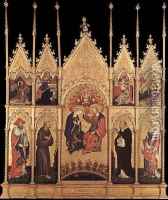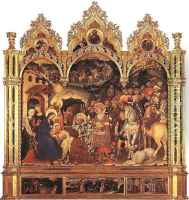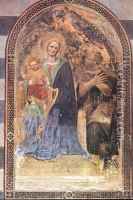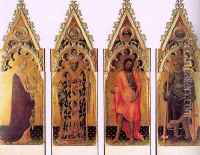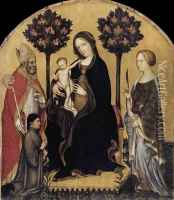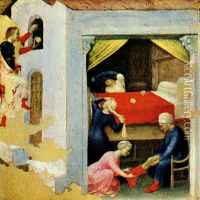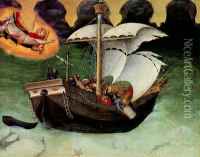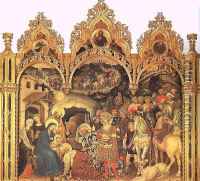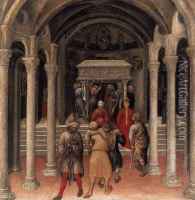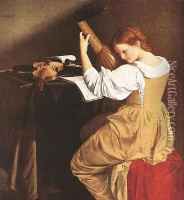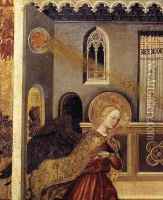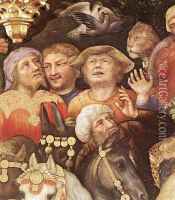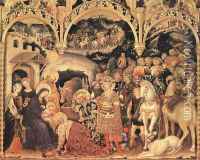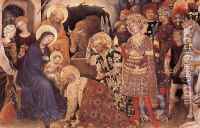Gentile Da Fabriano Paintings
Gentile da Fabriano was an Italian painter known for his participation in the International Gothic style. He was born around 1370 in or near the town of Fabriano, in the Marche region of central Italy. Gentile's work is characterized by its detailed naturalism and the use of rich, intricate ornamentation, which reflects the luxurious tastes of his courtly patrons. His most celebrated work is the 'Adoration of the Magi' altarpiece for the Strozzi Chapel in the church of Santa Trinita in Florence, completed in 1423. This piece is renowned for its use of lavish materials, including gold leaf, and its elaborate attention to detail, which can be seen in the ornate costumes and the naturalistic landscapes.
Gentile's career was marked by his extensive travels throughout Italy, which exposed him to various regional styles and techniques. These experiences informed his art, making it a synthesis of Gothic and Renaissance elements. He was highly regarded during his lifetime and influenced many contemporary and subsequent artists, including Pisanello. Gentile's work was also noted for its narrative quality, as seen in his frescoes and altarpieces, where he displayed a sophisticated use of color, light, and composition to convey complex religious scenes.
Despite his fame during the early 15th century, Gentile da Fabriano's legacy was somewhat overshadowed by the rise of the Renaissance and artists like Masaccio, who were breaking new ground with their use of perspective and human anatomy. Nevertheless, Gentile's contributions to the development of Italian art are significant, and his works are still appreciated today for their beauty and historical importance. He died in Rome in 1427, leaving behind a body of work that continues to be studied and admired for its fusion of Gothic elegance and a nascent Renaissance spirit.
